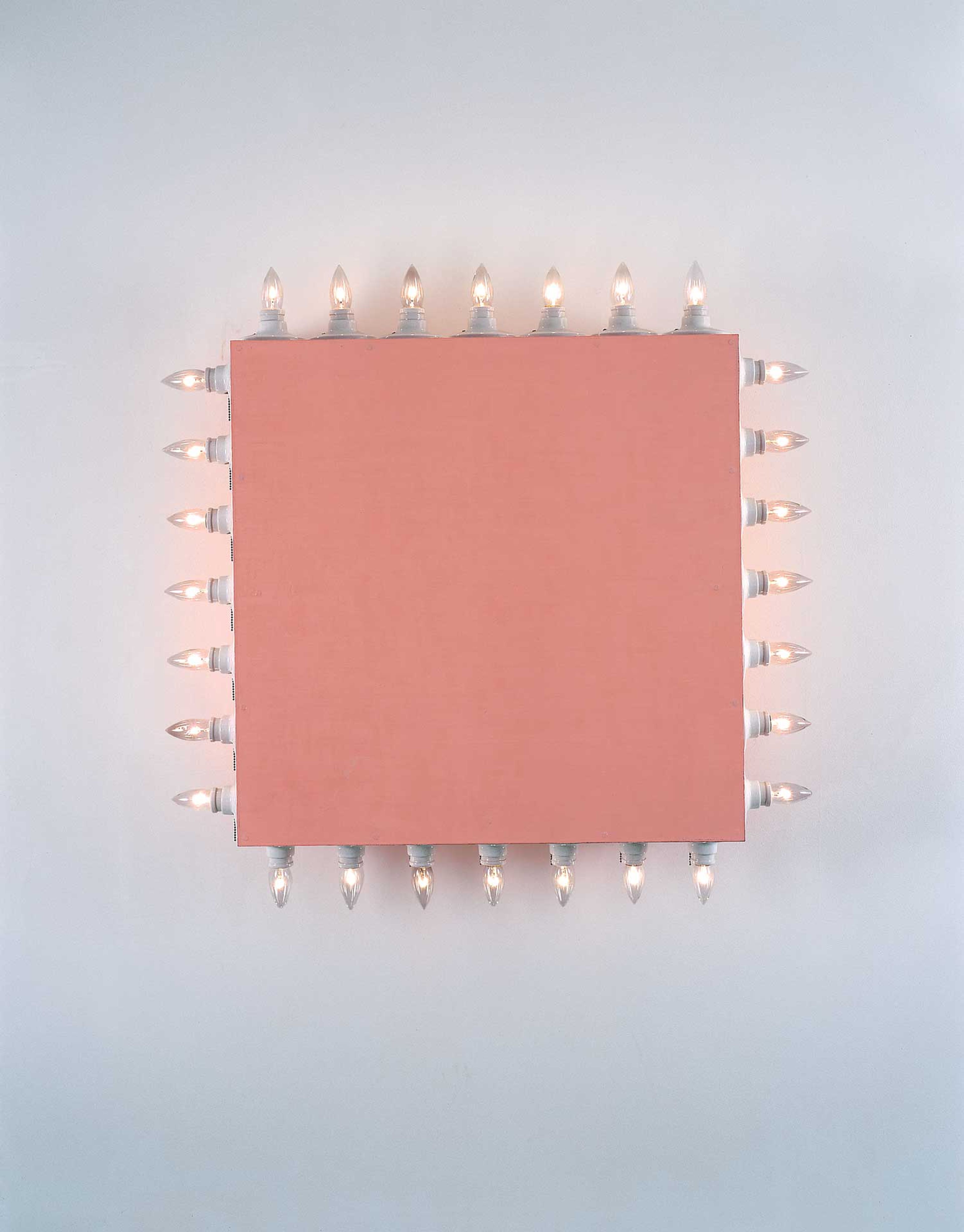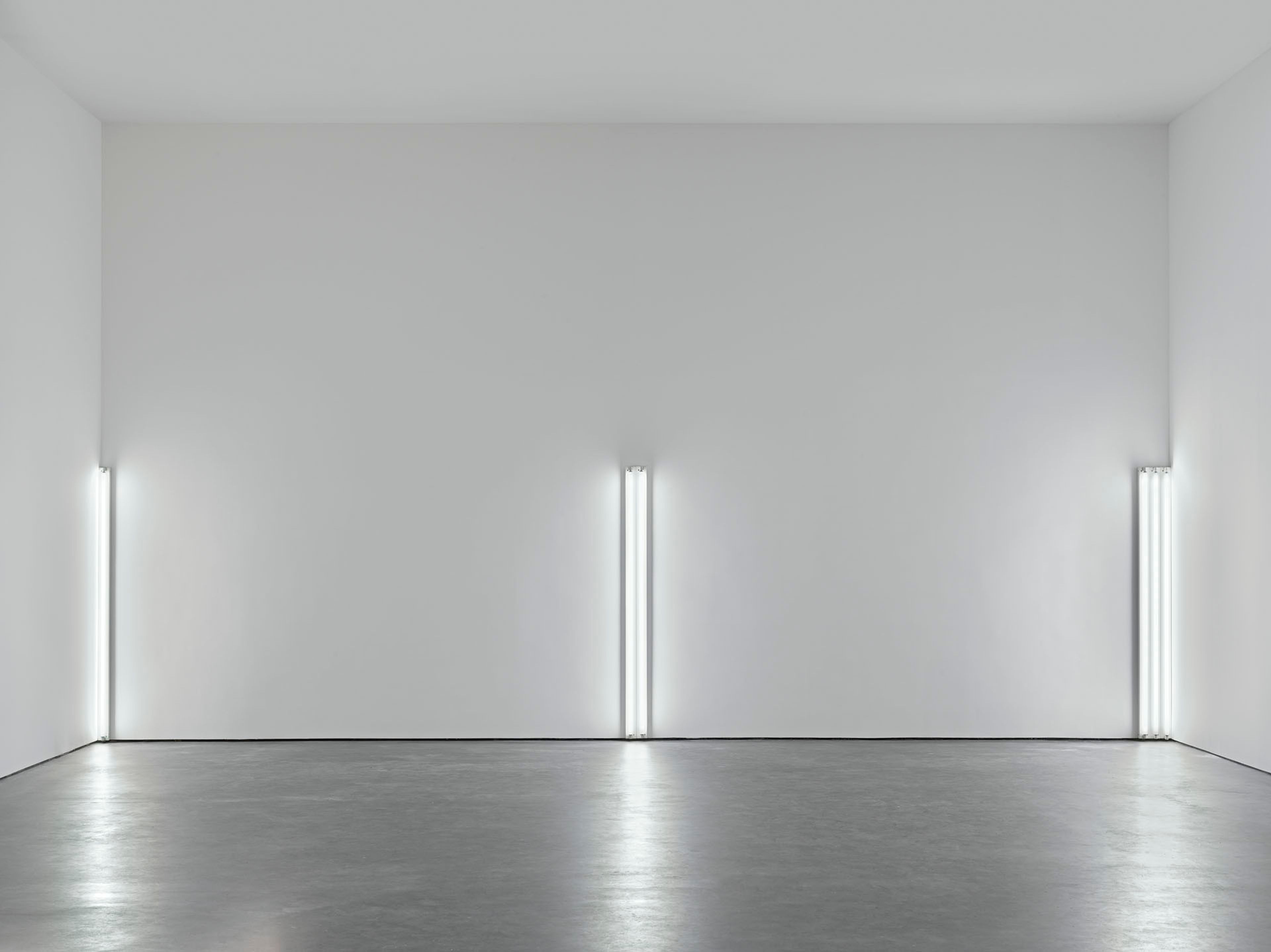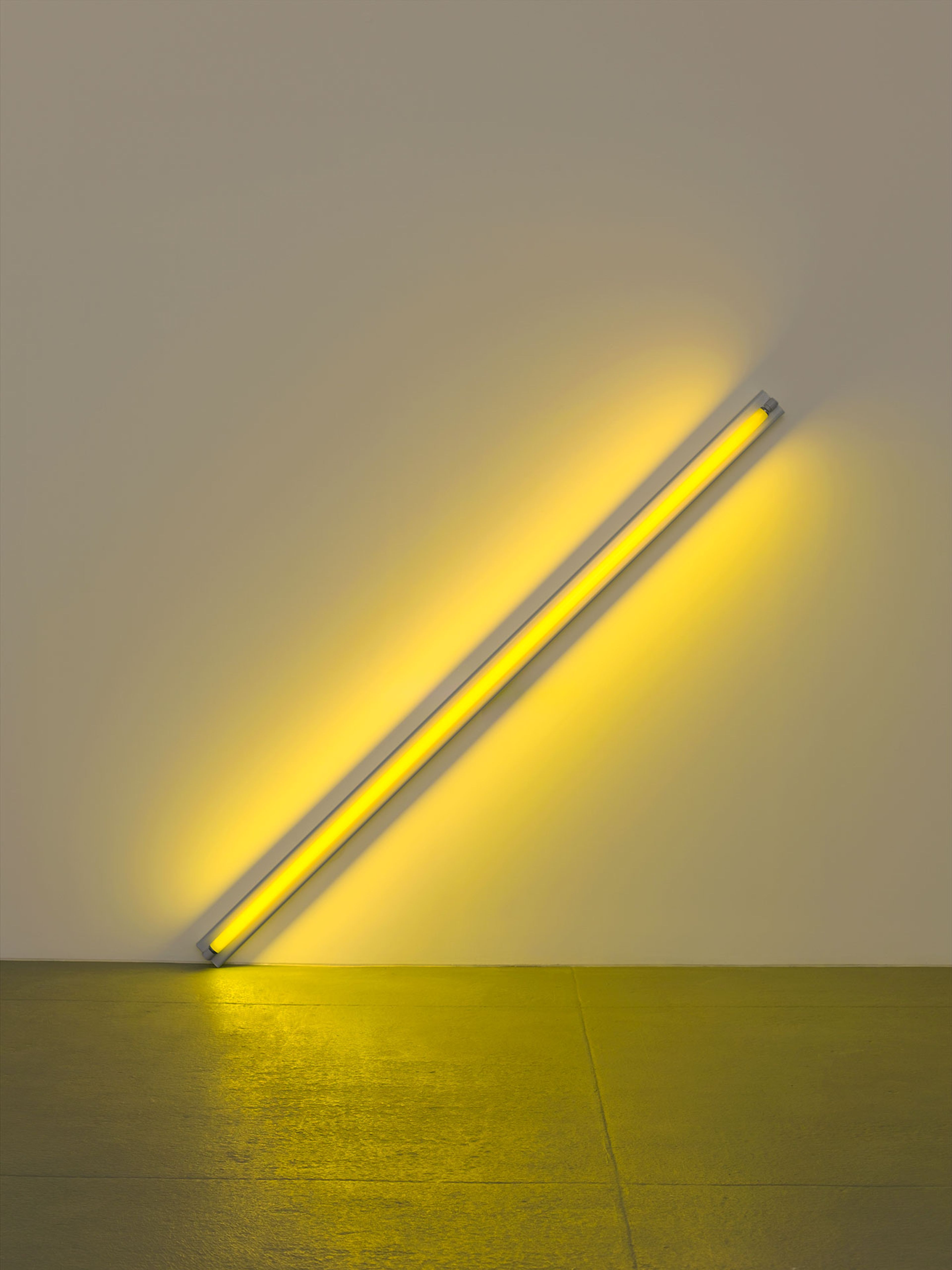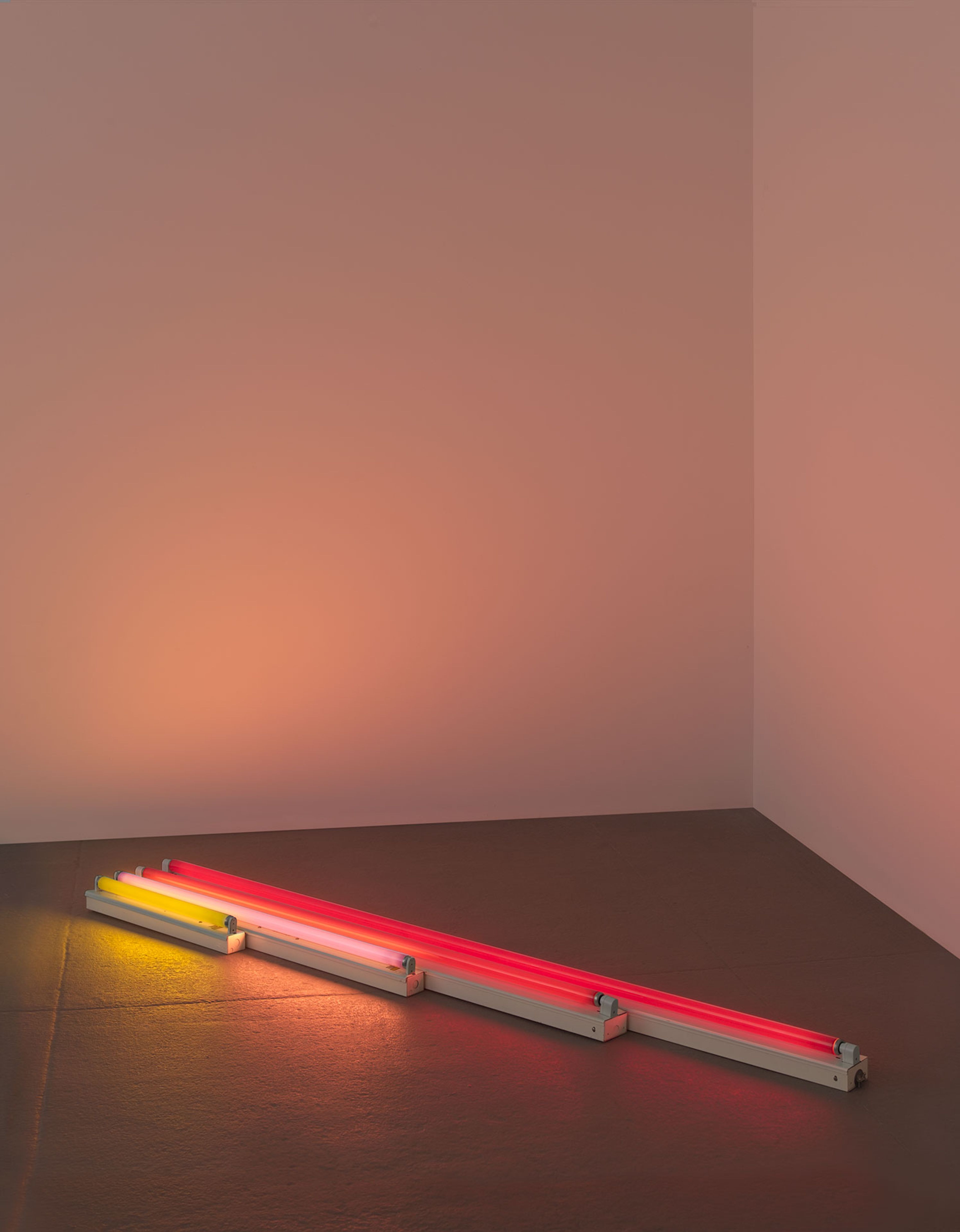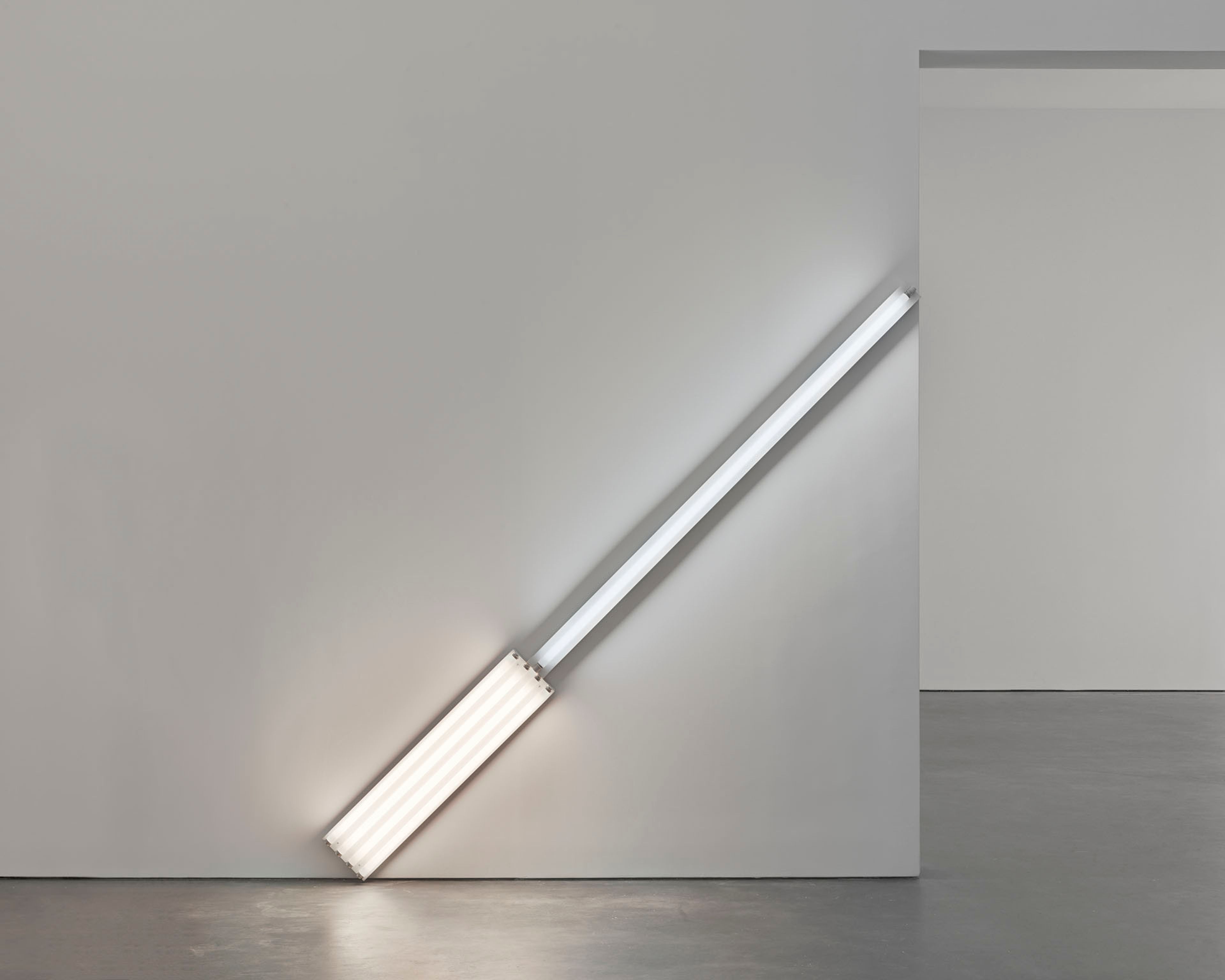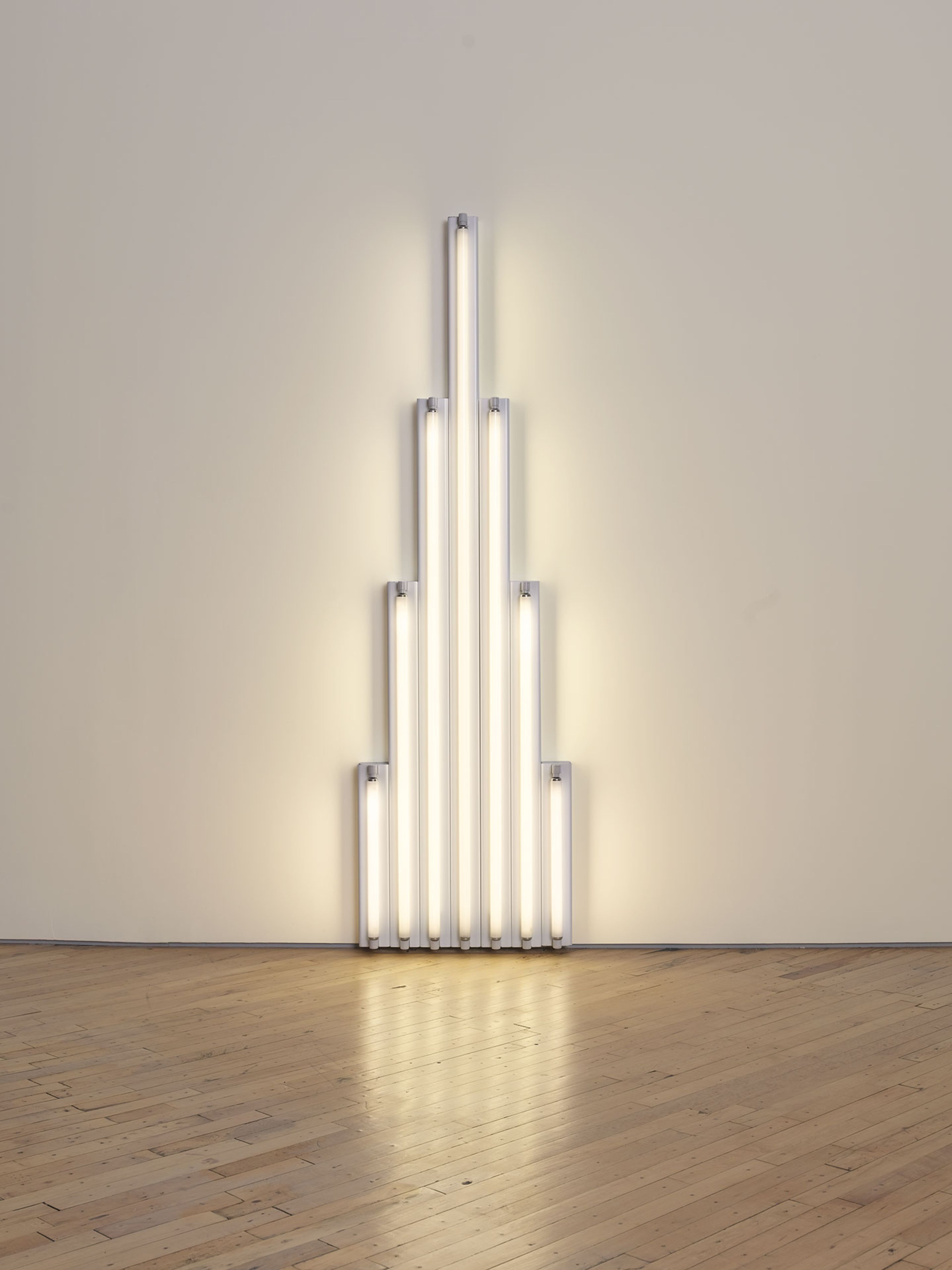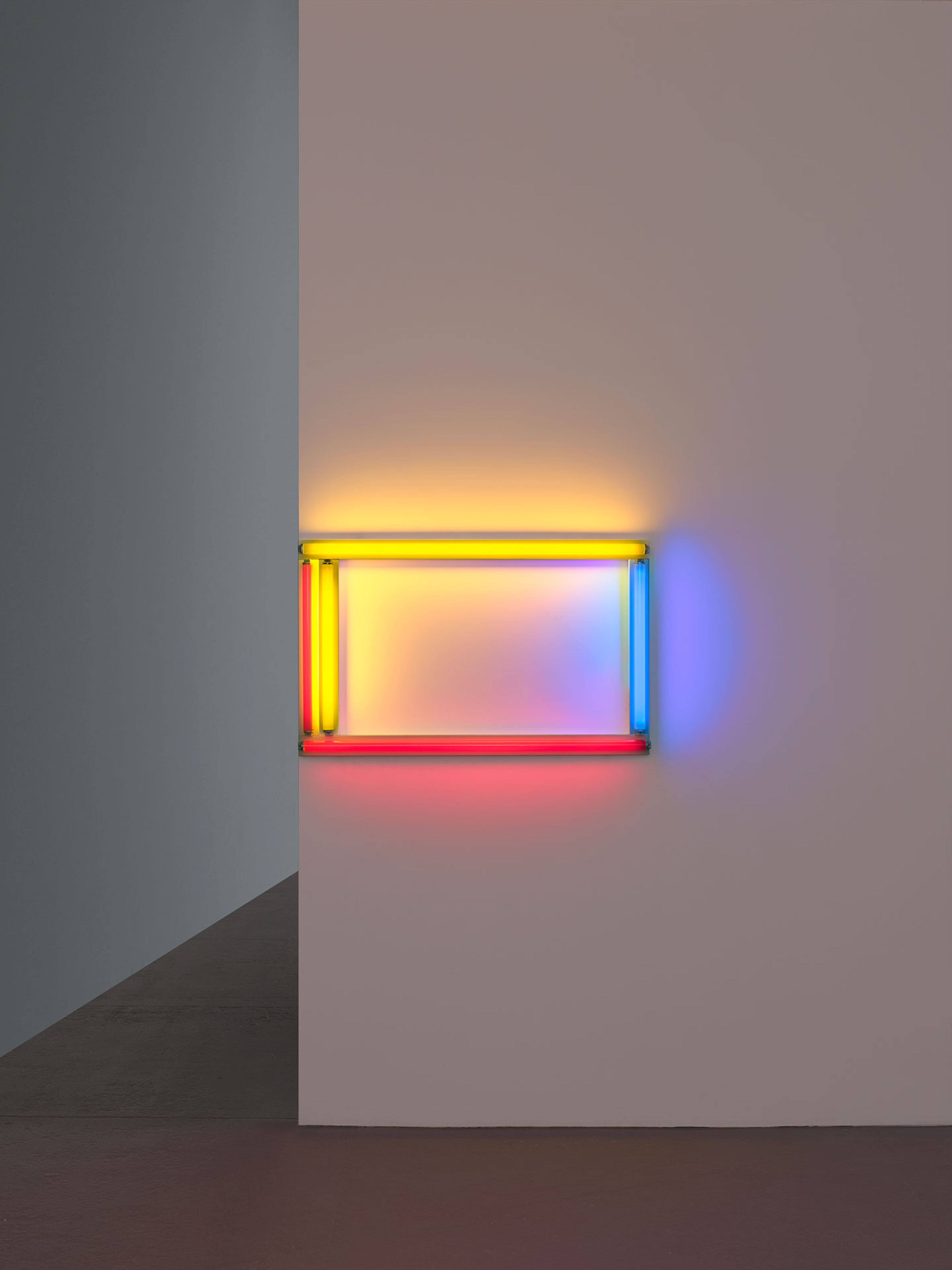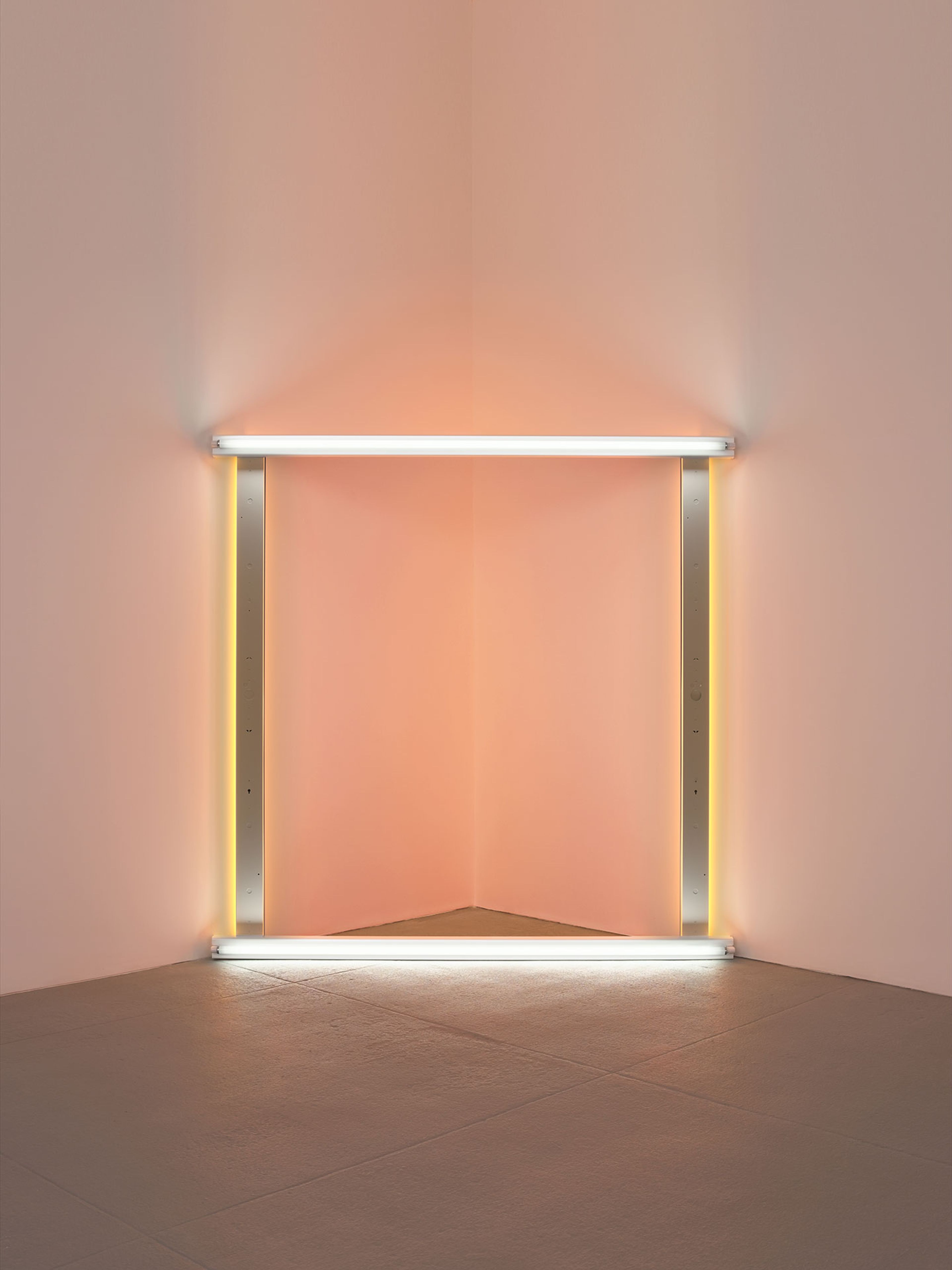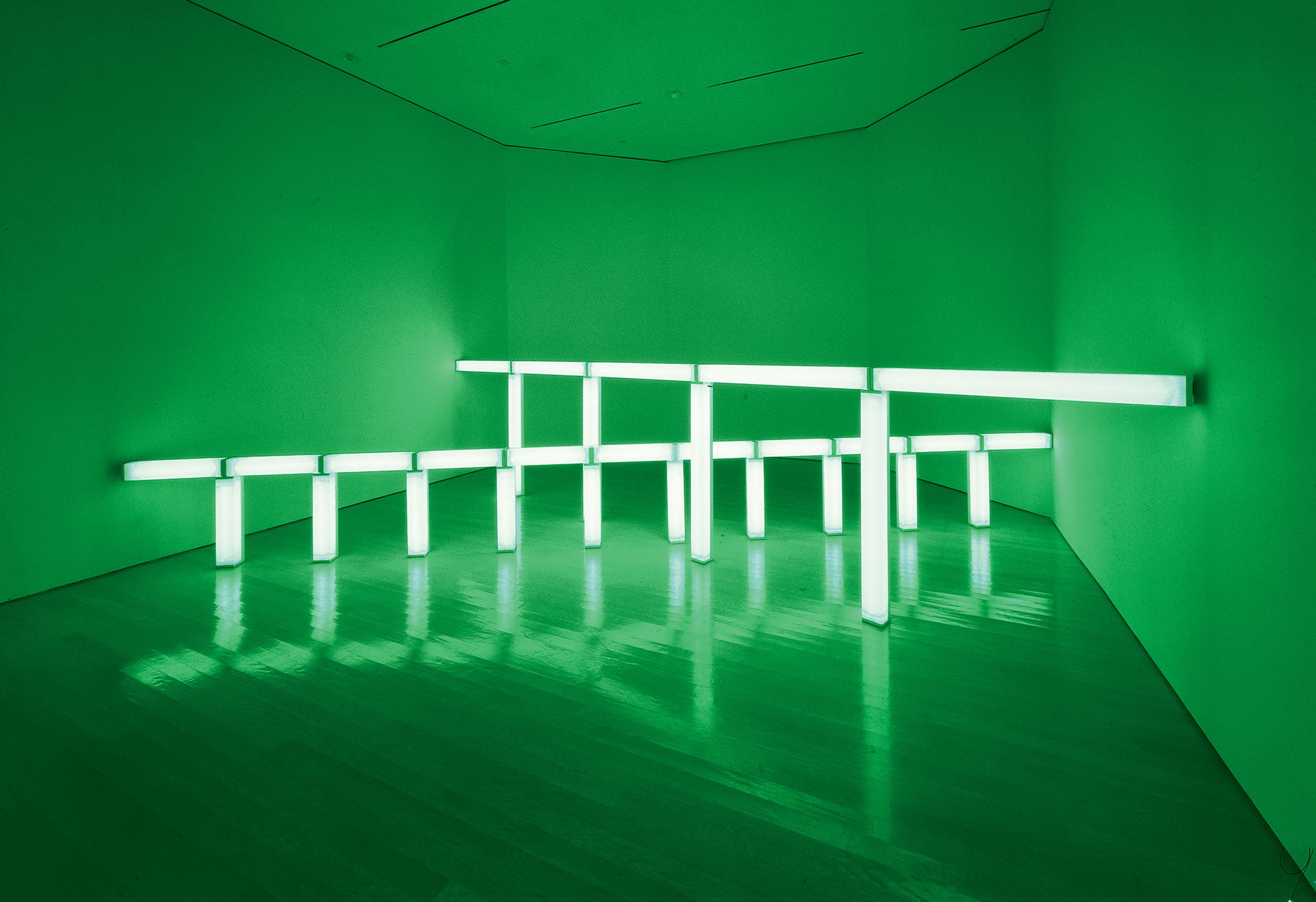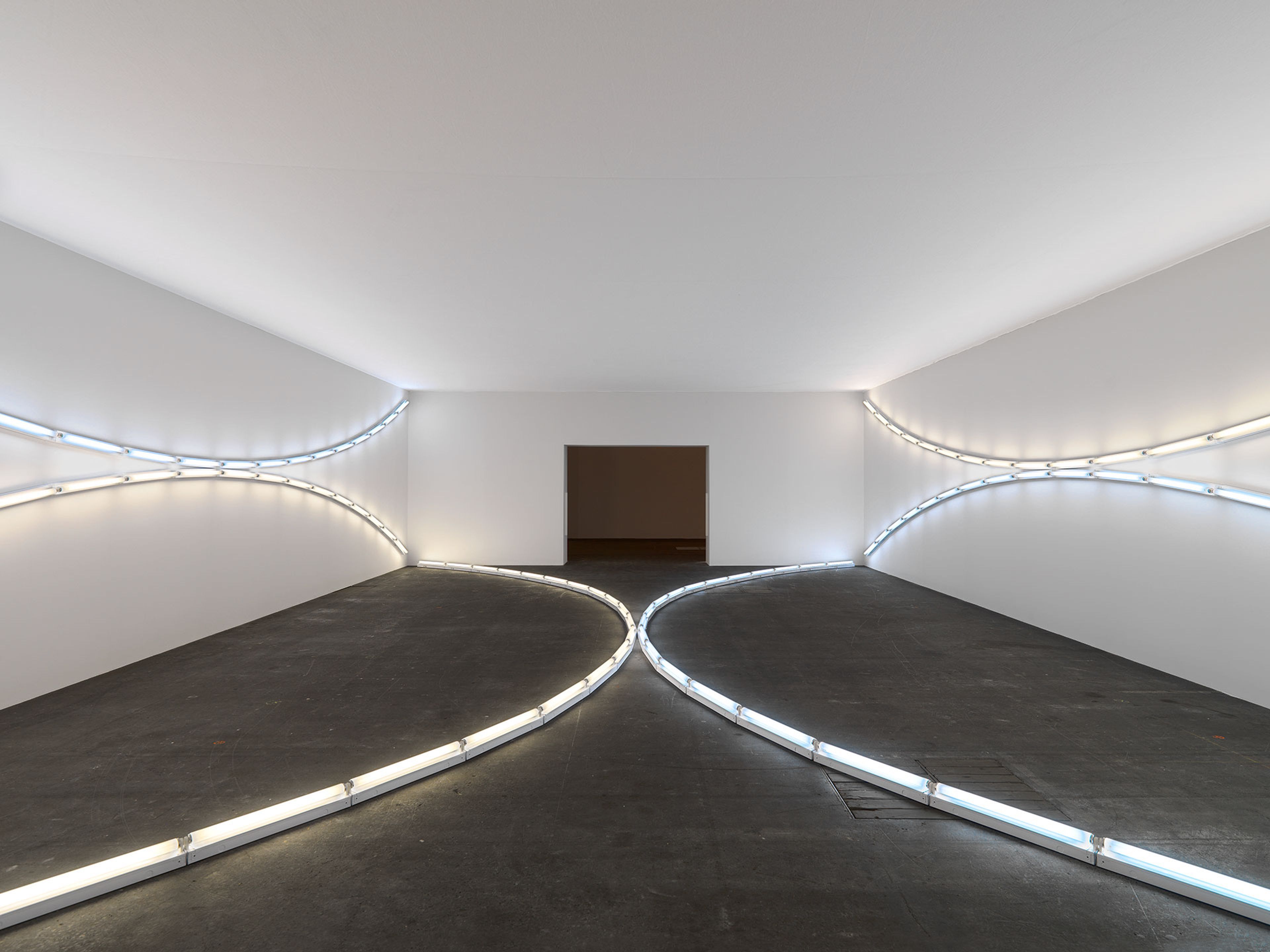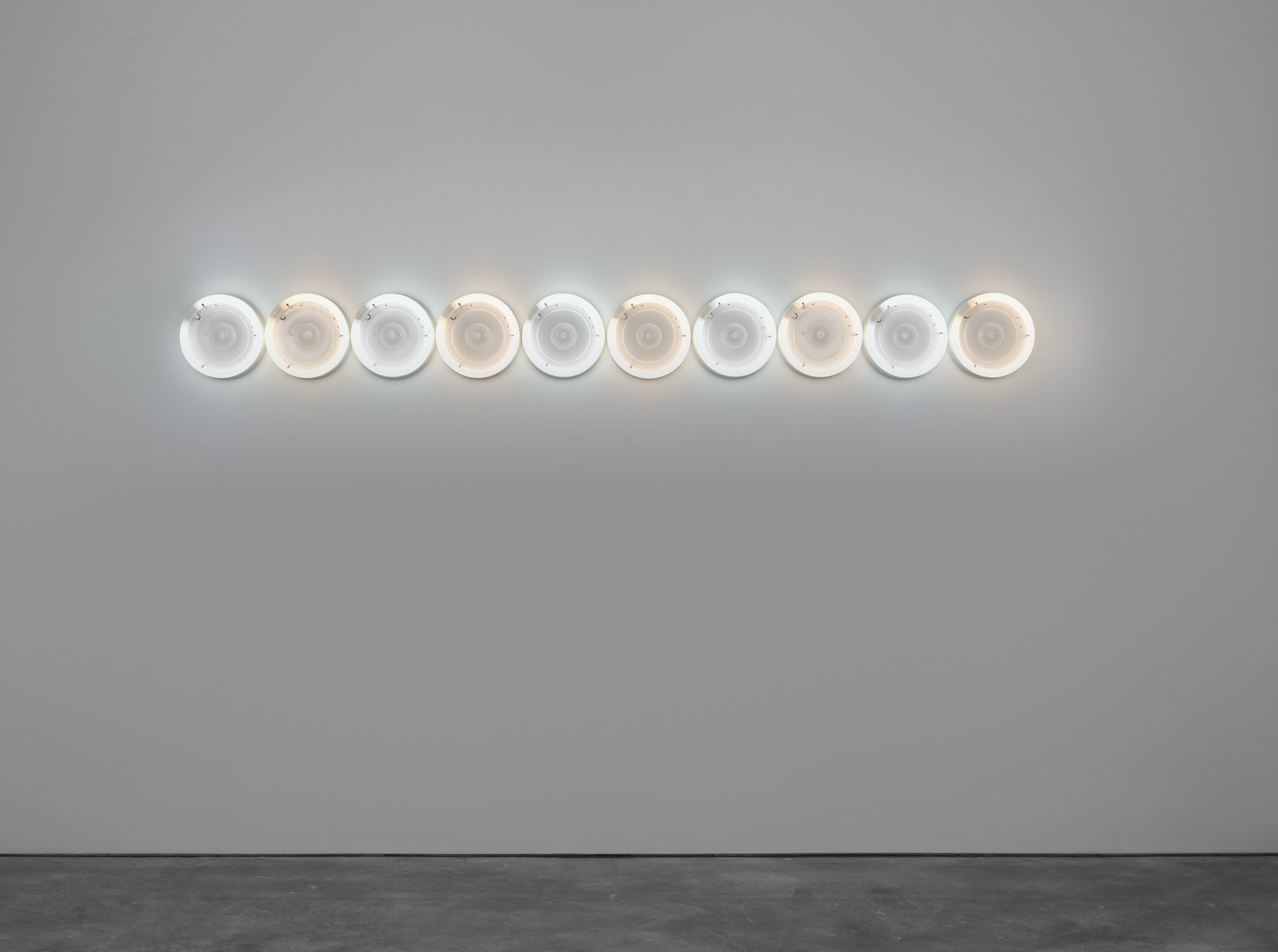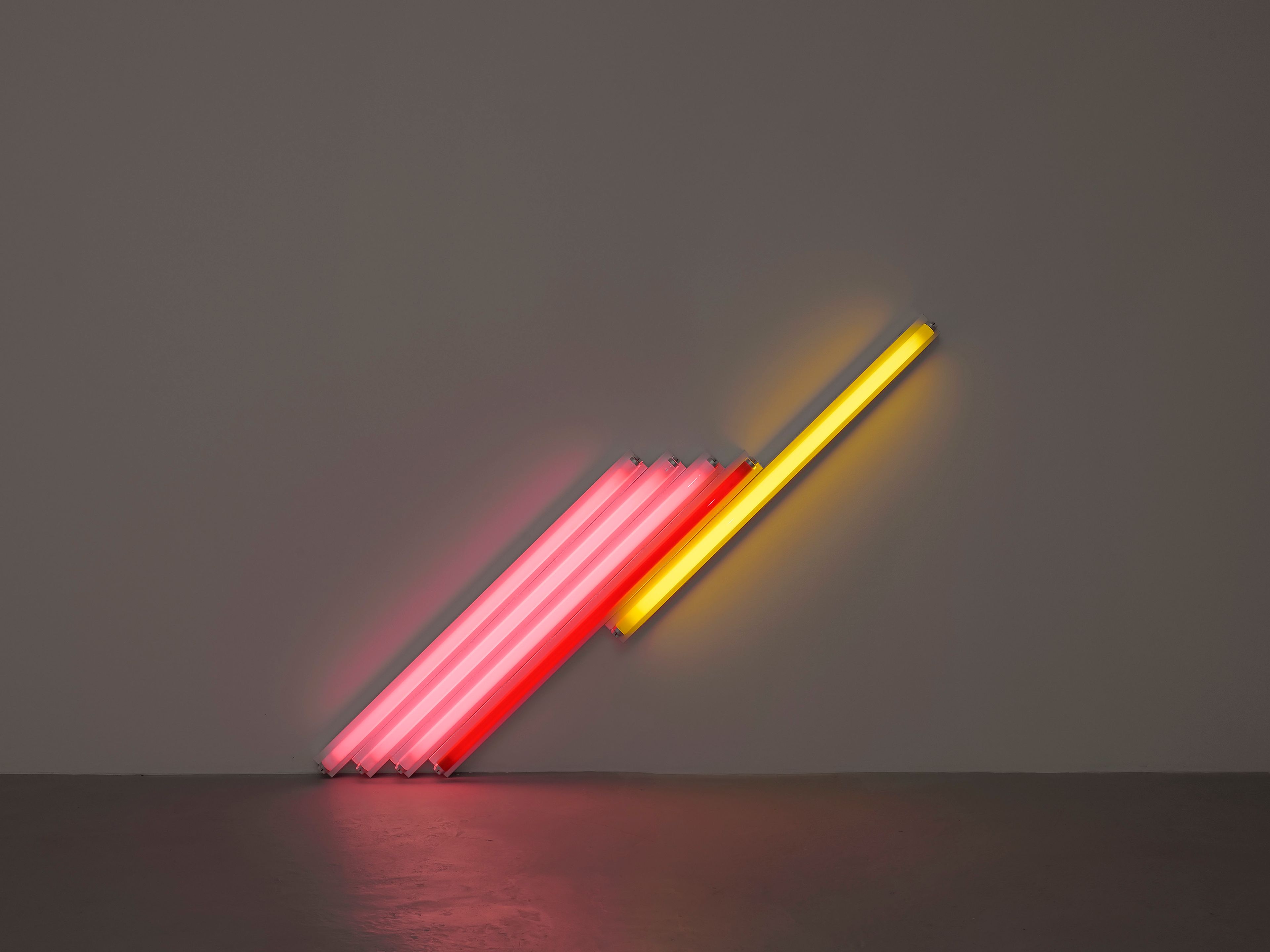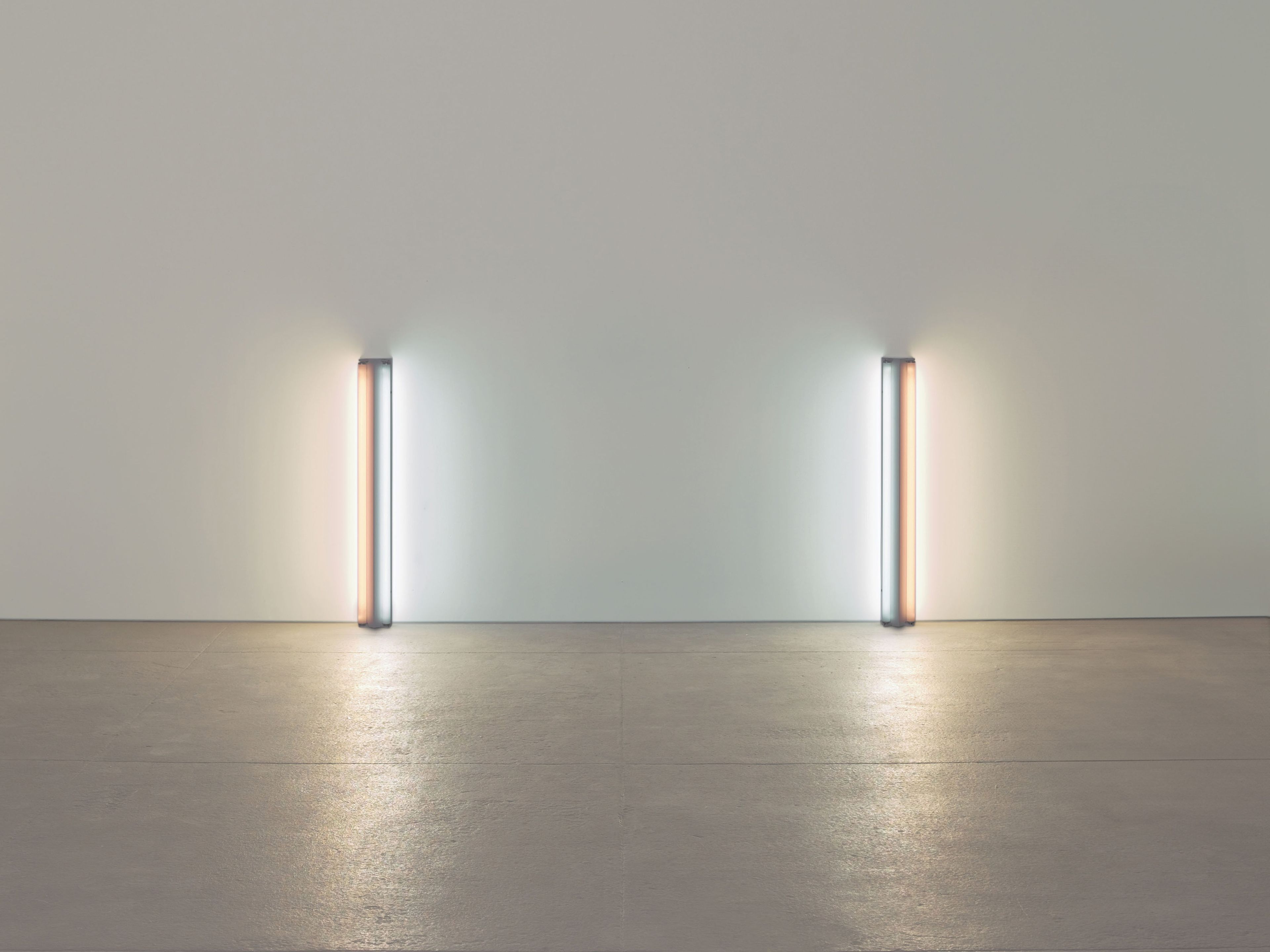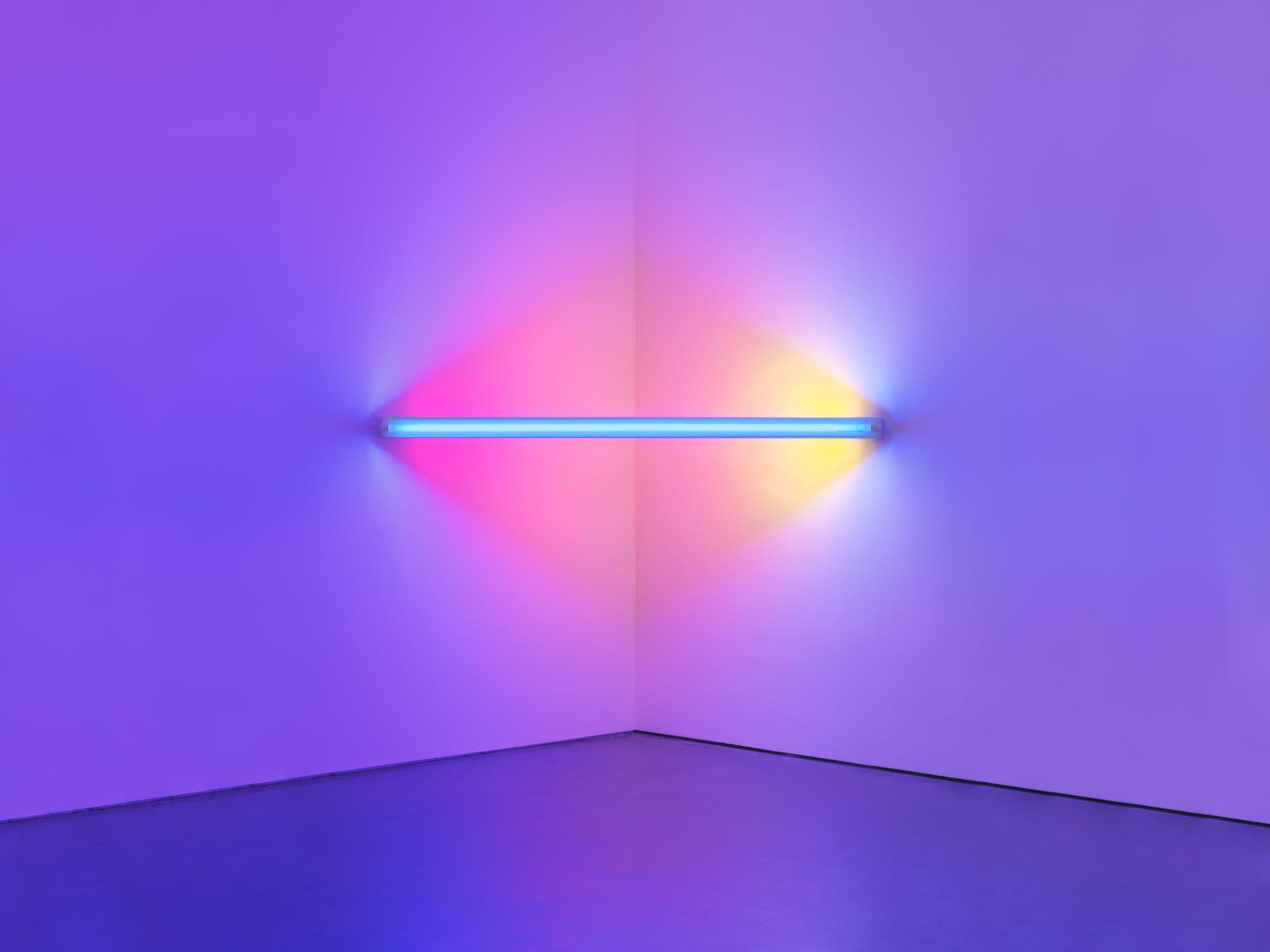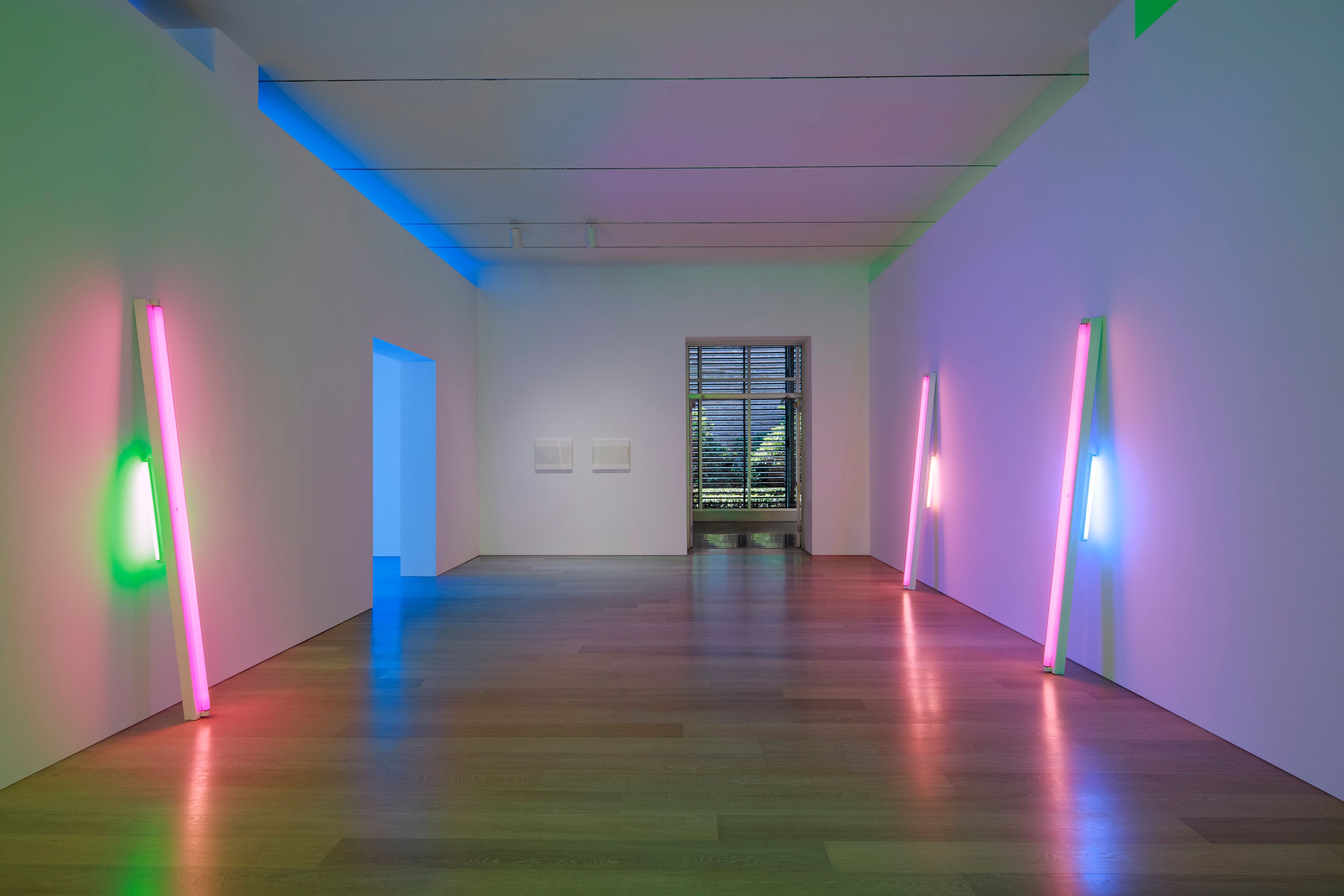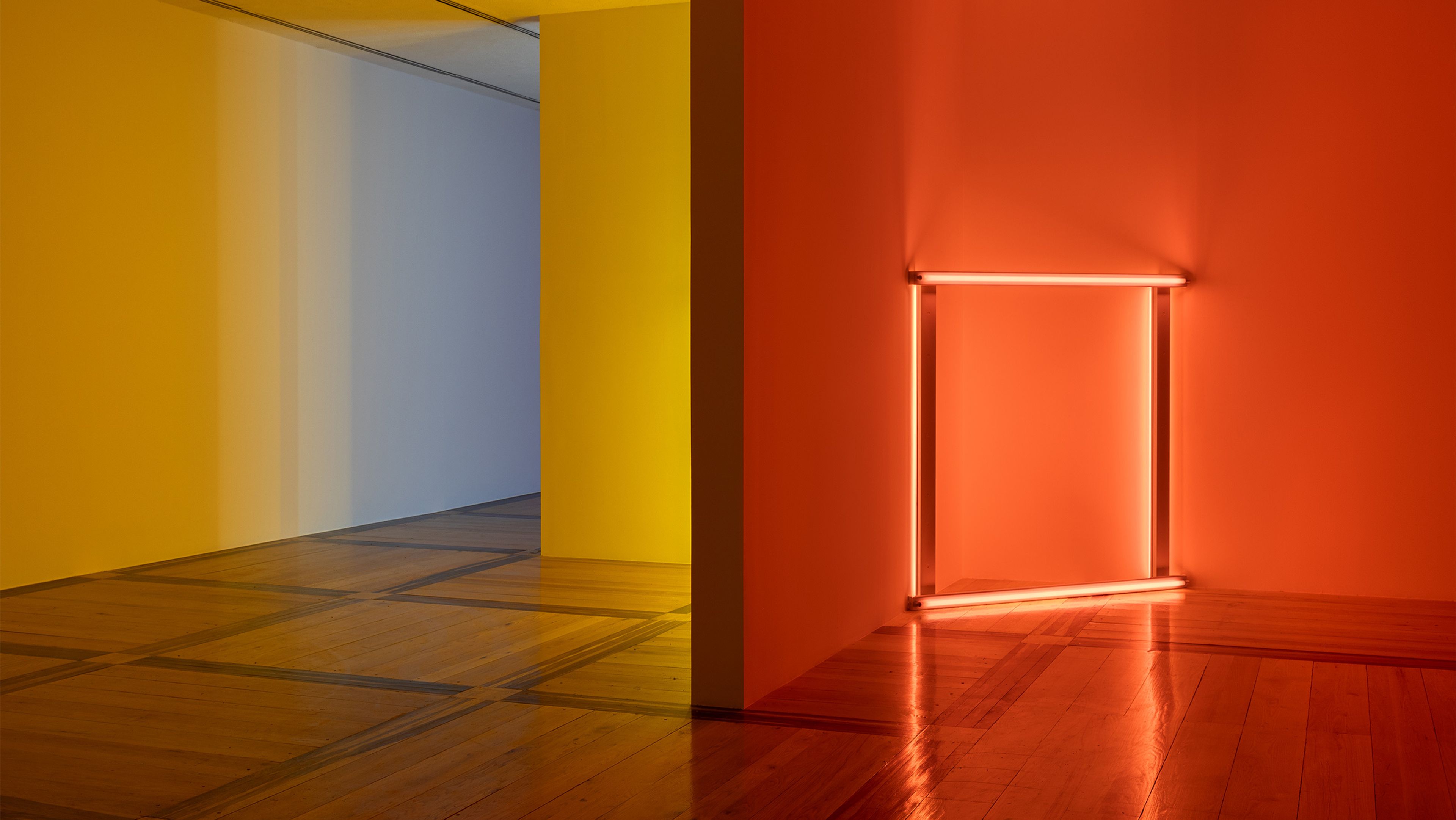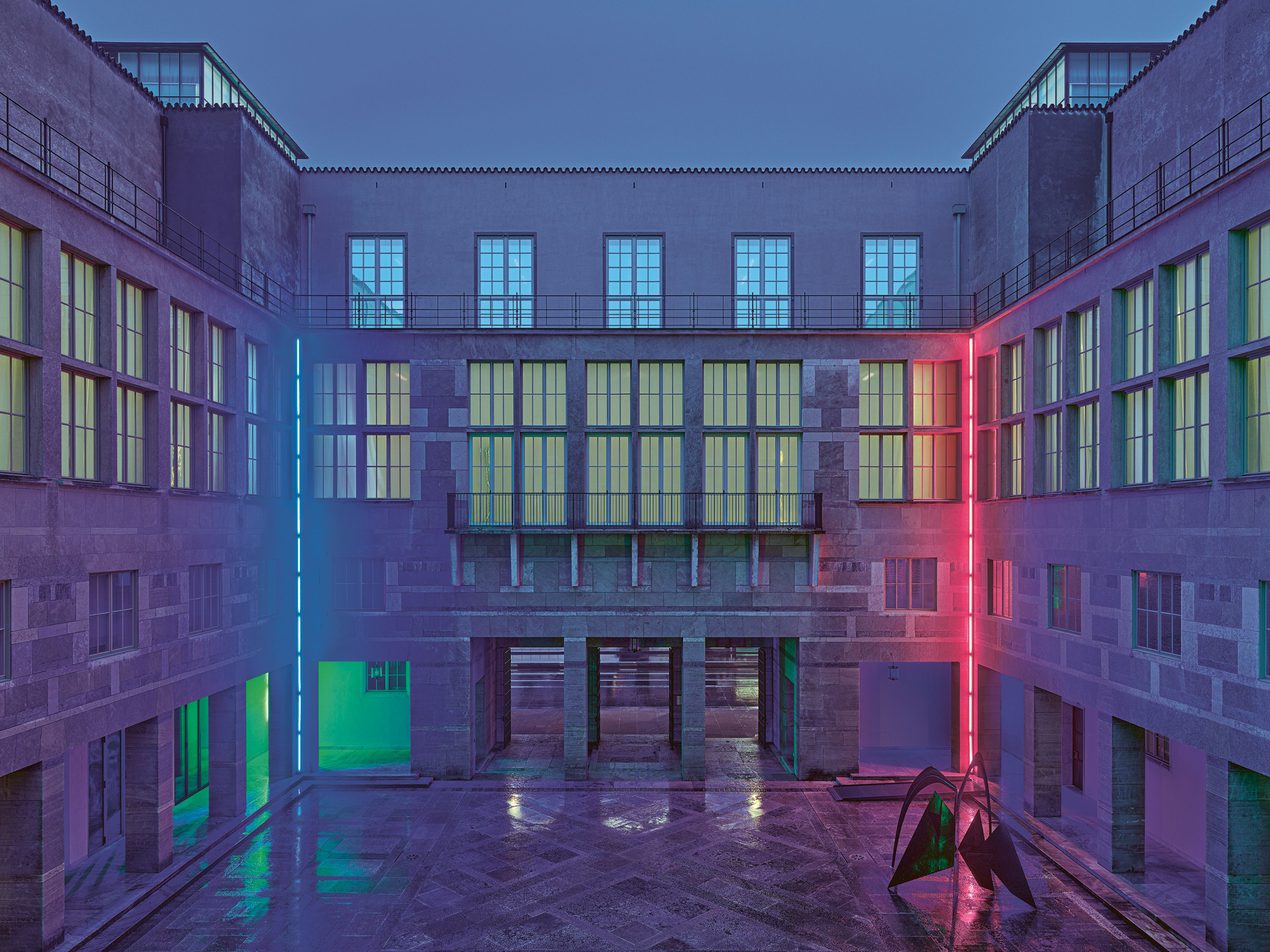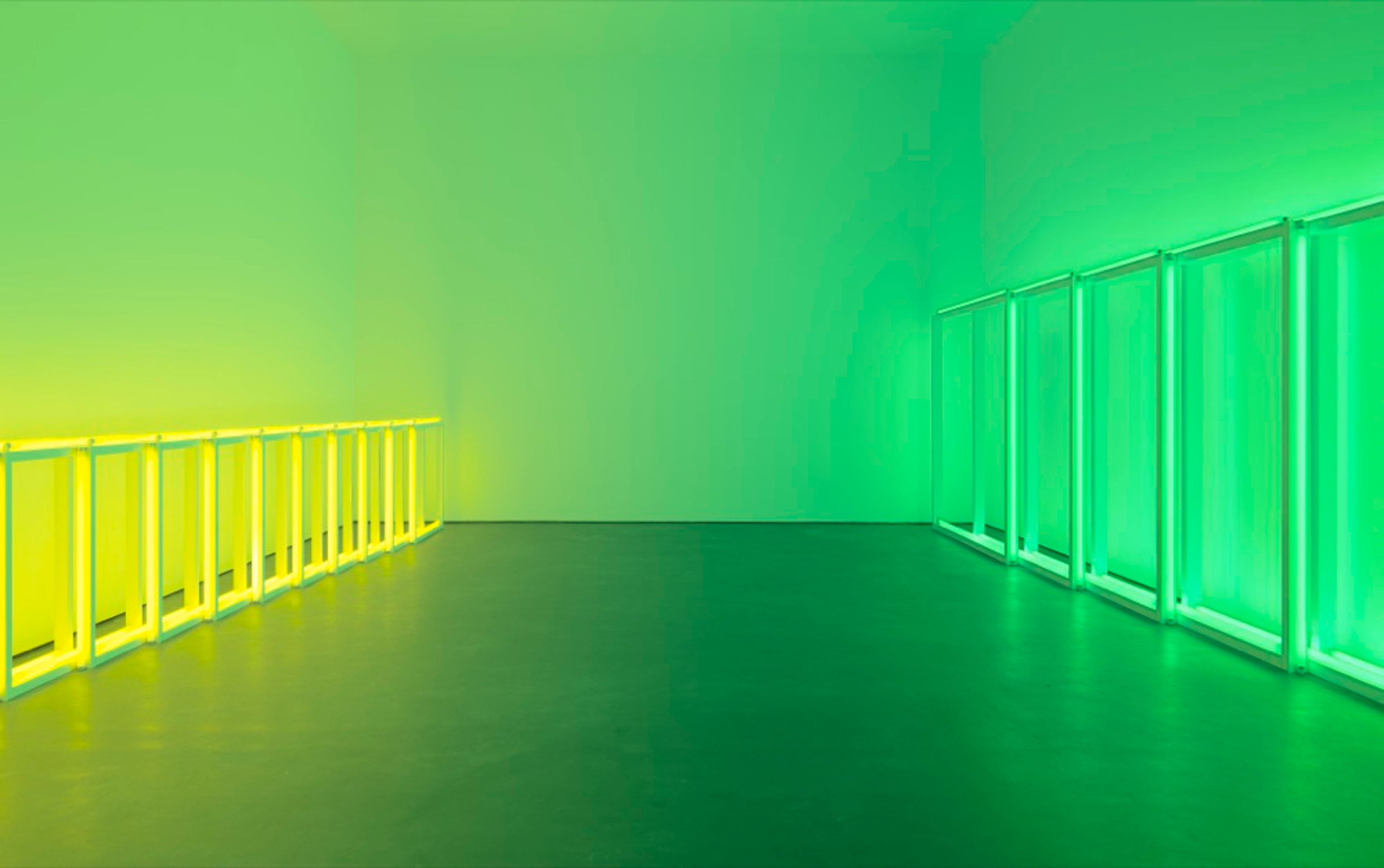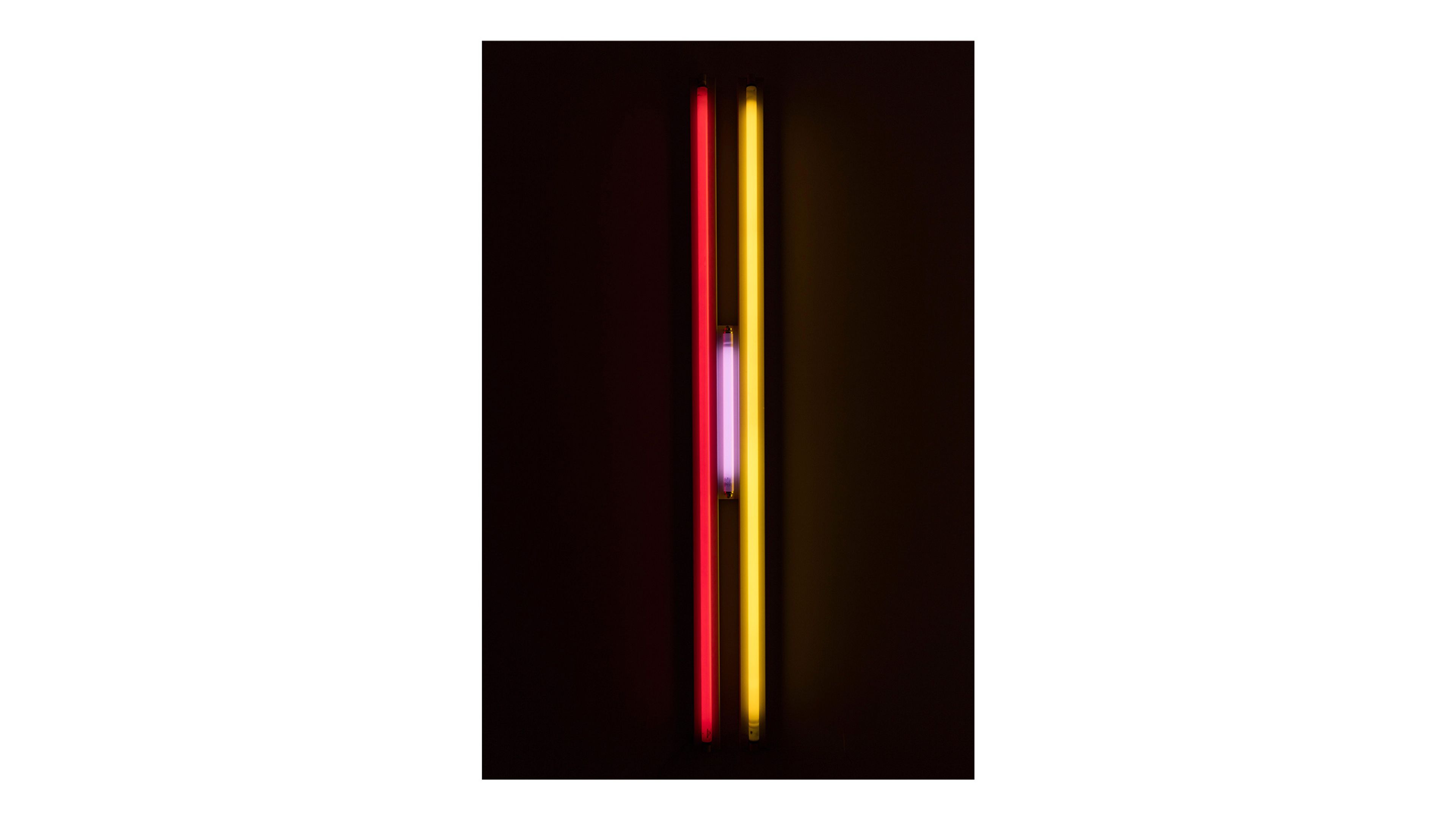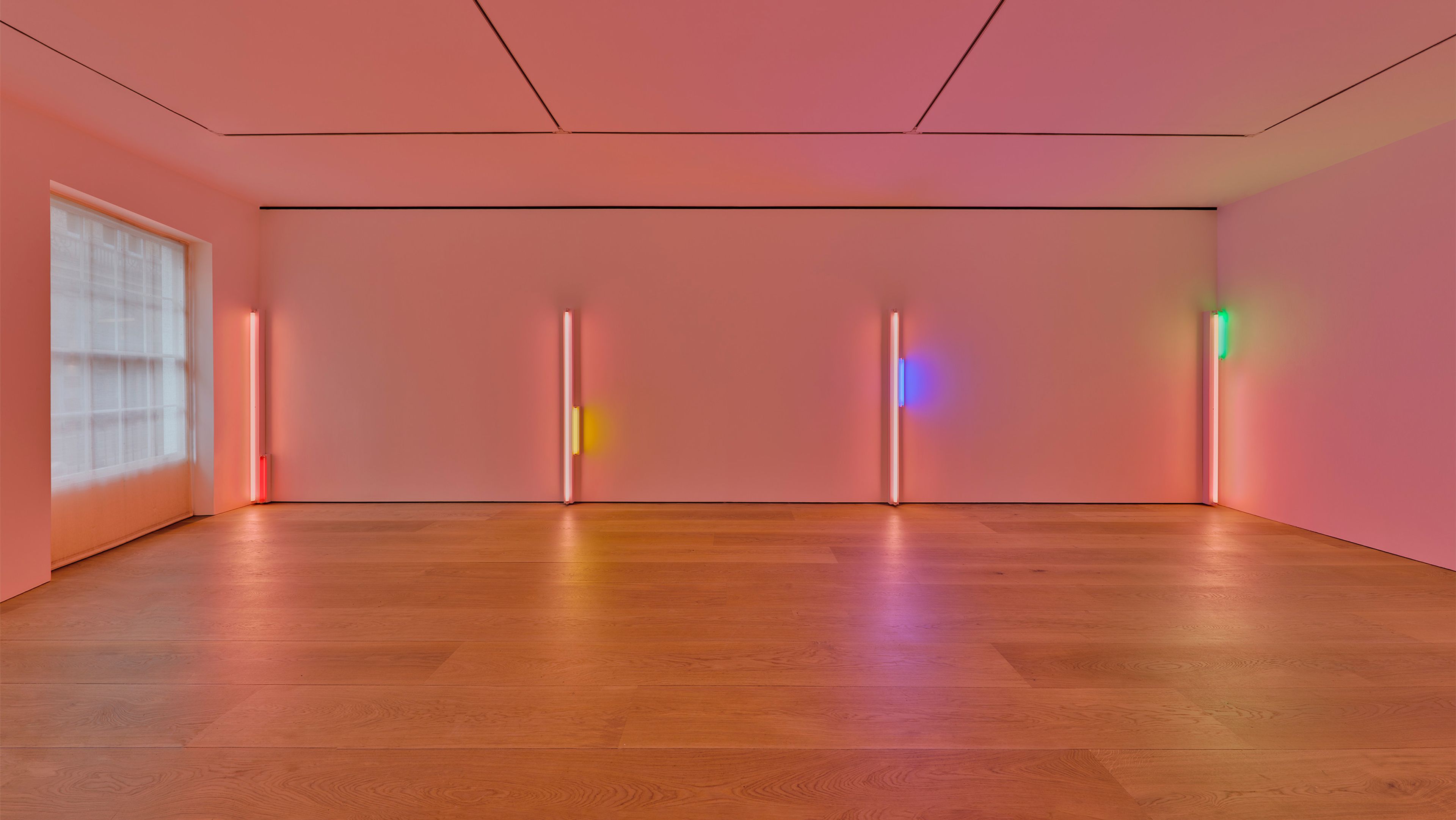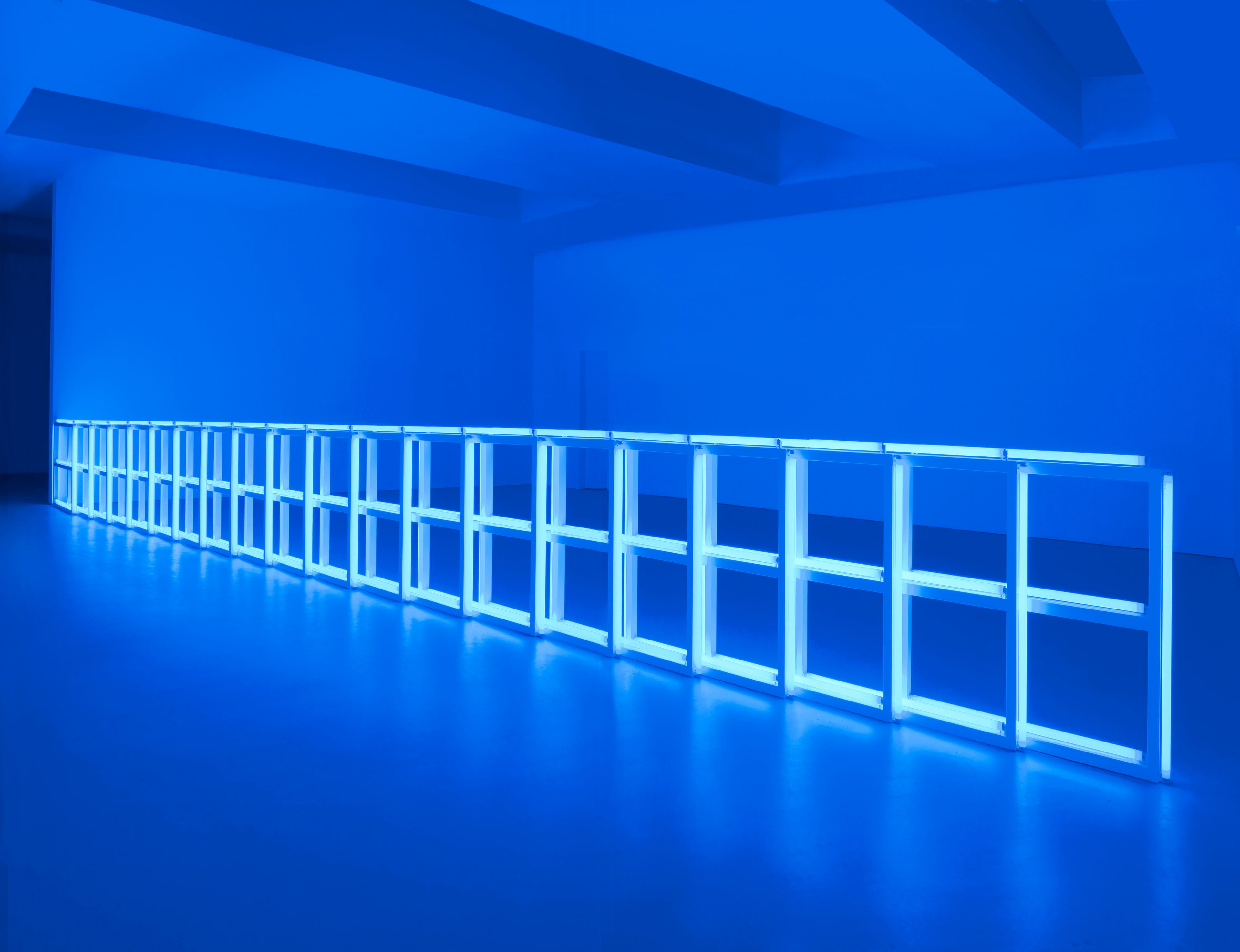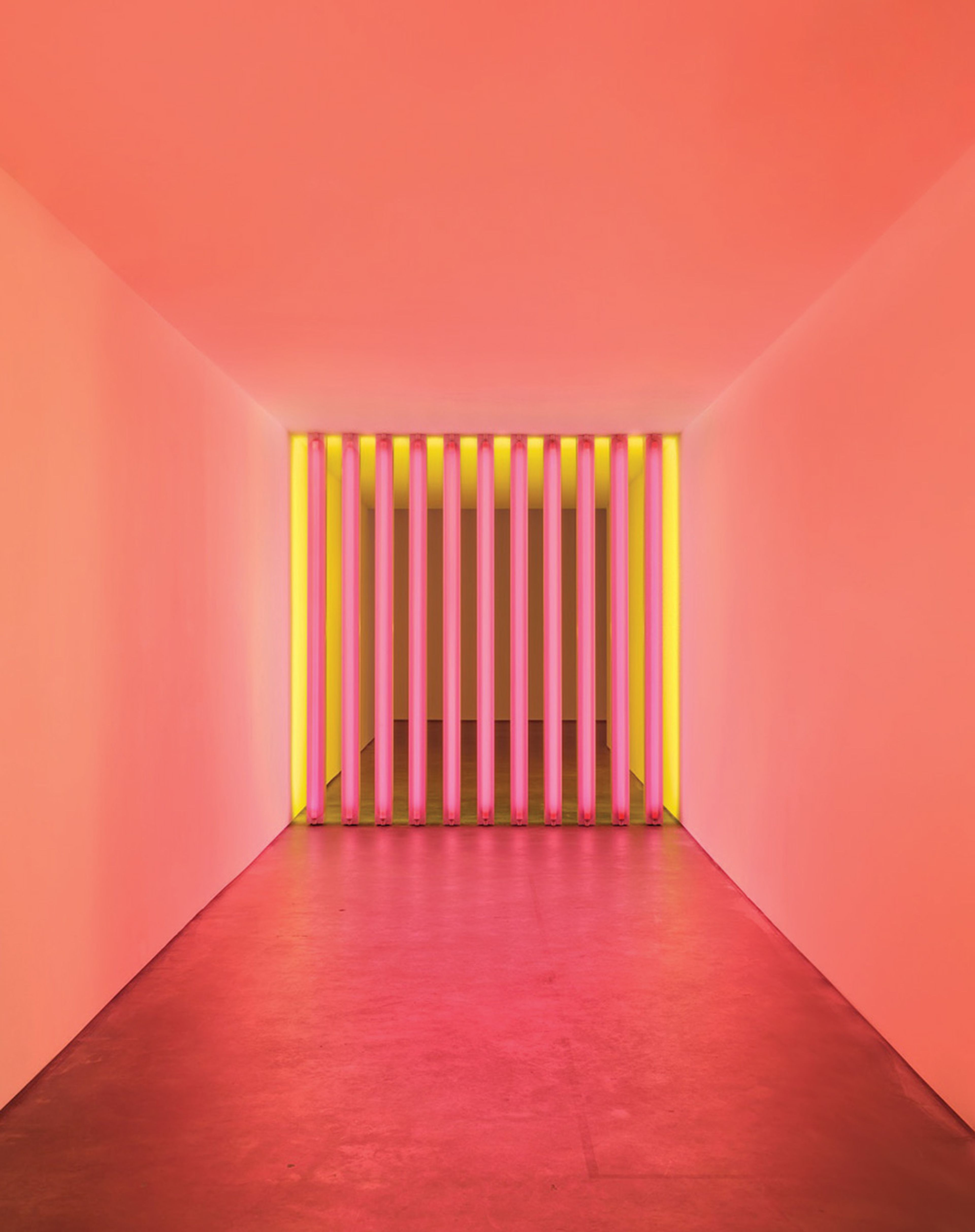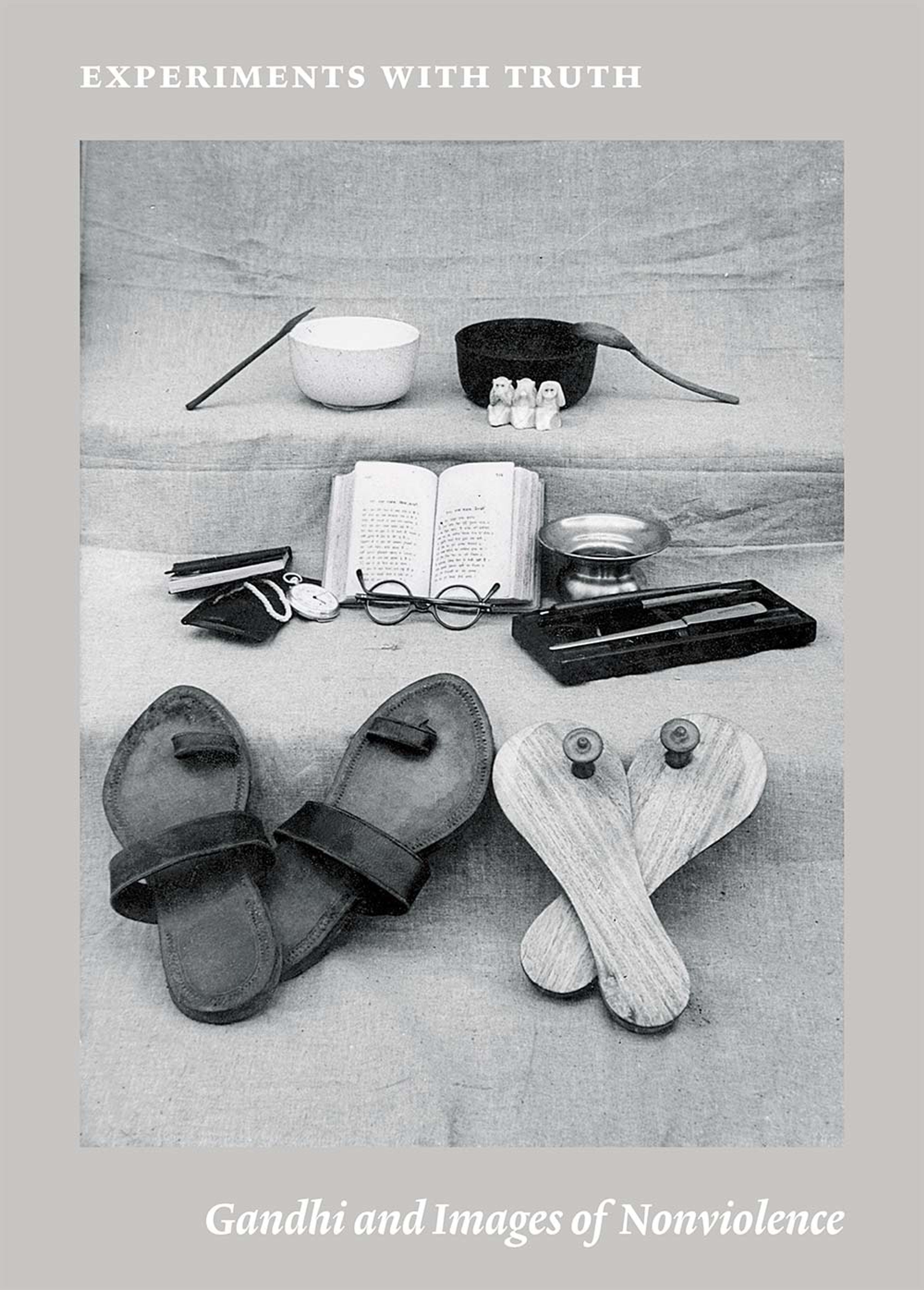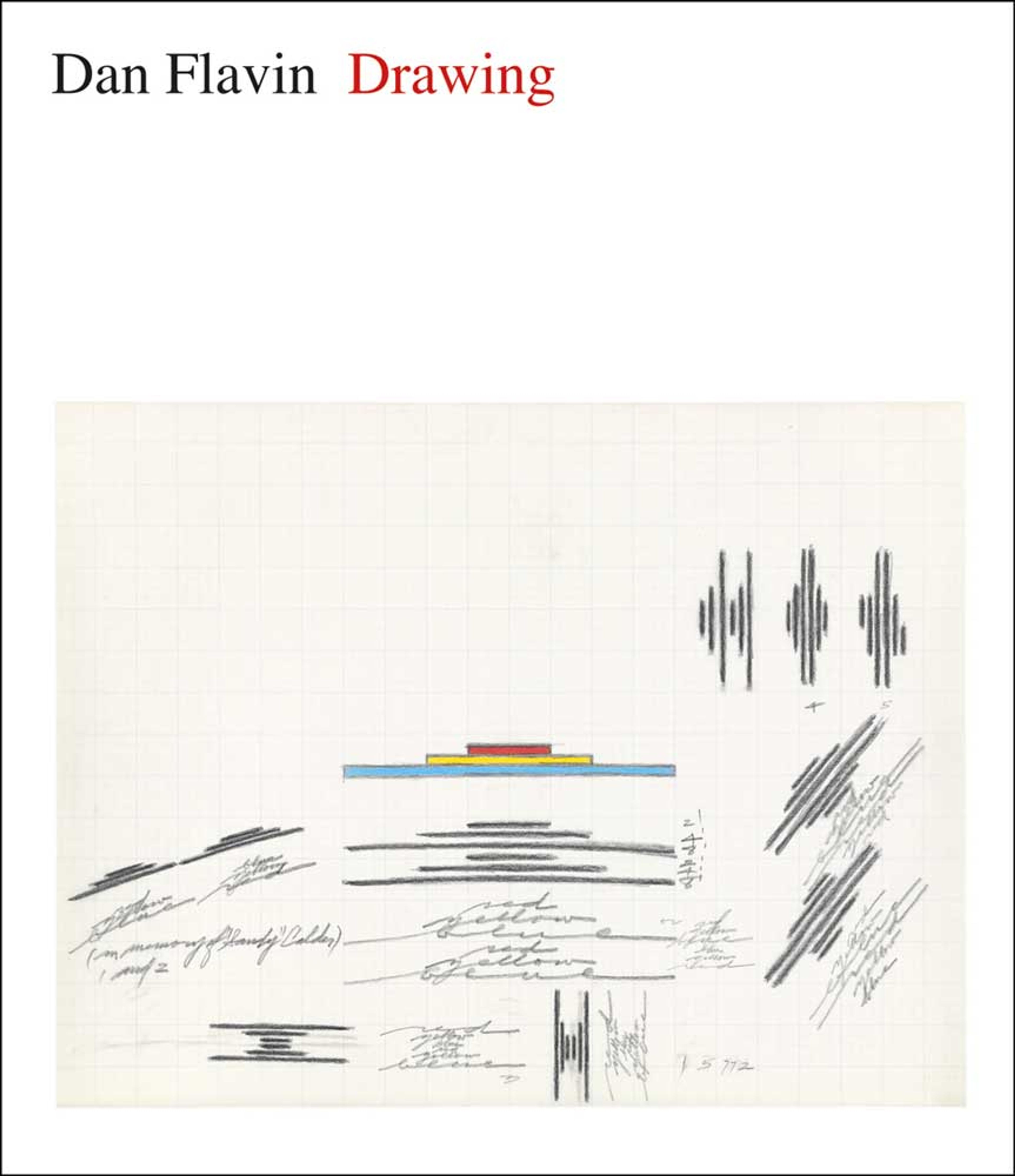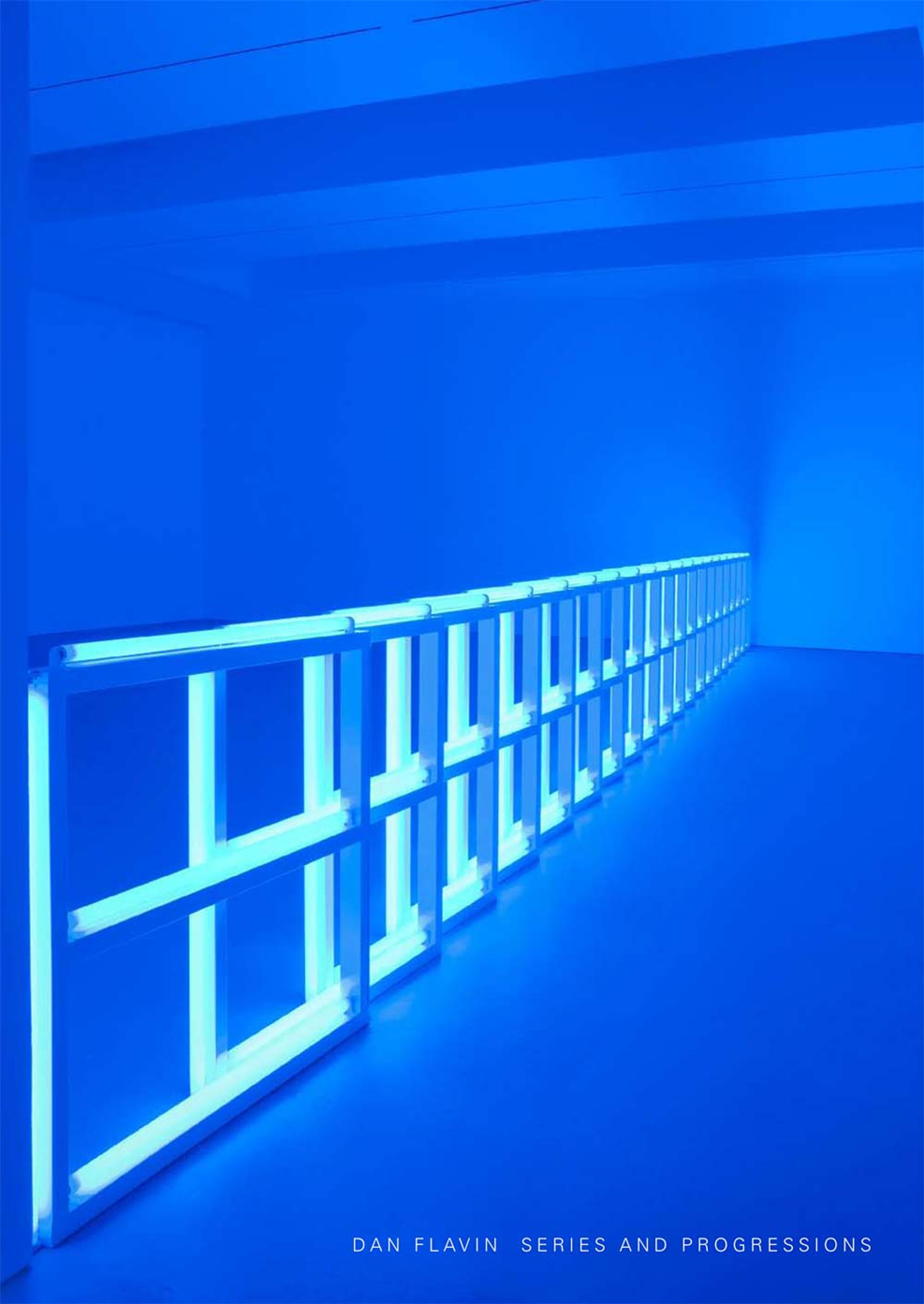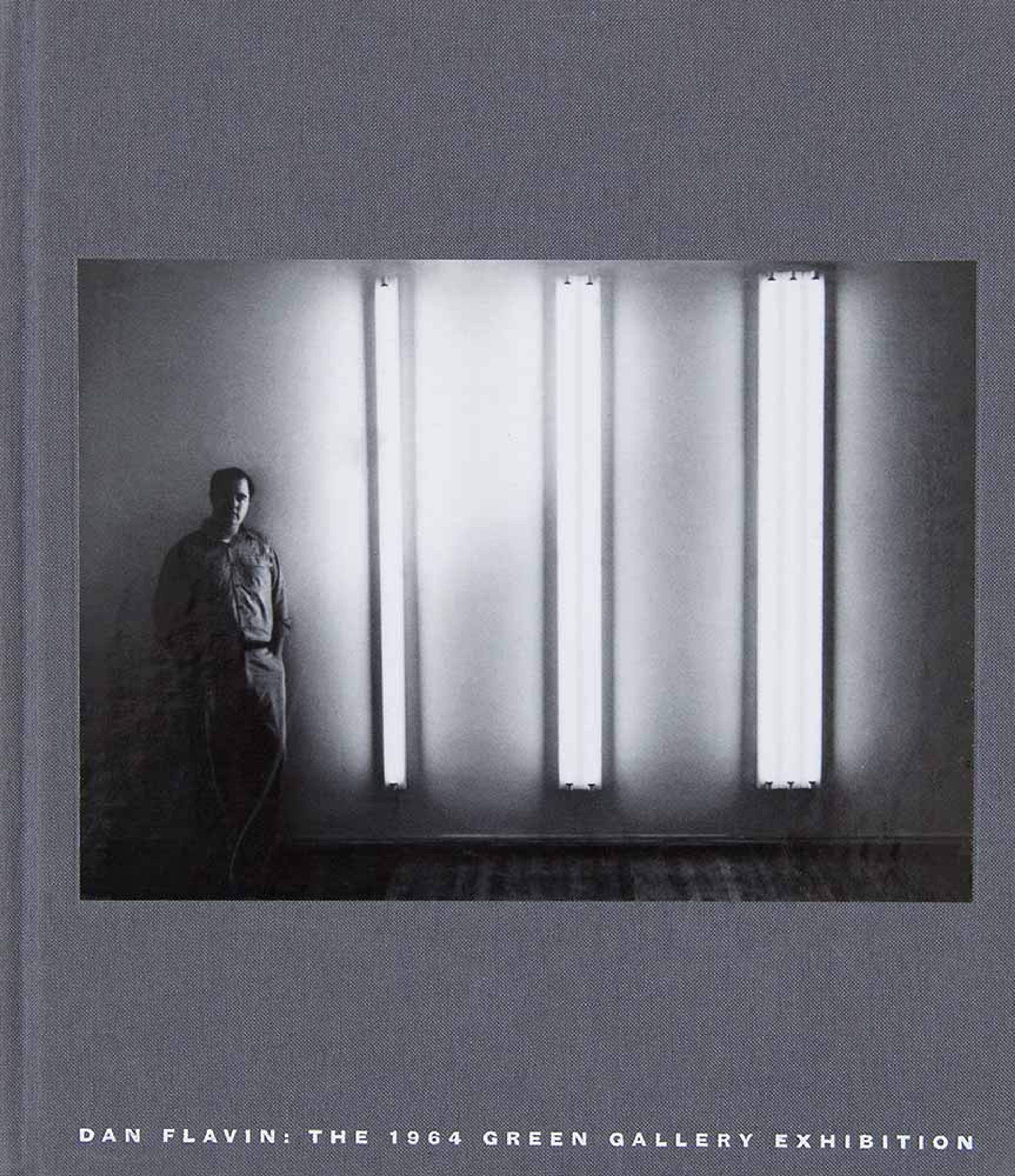Dan Flavin
From 1963, when he conceived the diagonal of May 25, 1963 (to Constantin Brancusi)—a single gold fluorescent lamp installed diagonally on a wall—until his death in 1996, Dan Flavin (b. produced a singularly consistent and prodigious body of work that utilized commercially available fluorescent lamps to create installations (or "situations," as he preferred to call them) of light and color. Through these light constructions, Flavin was able to at once establish and redefine space.
Learn MoreSurvey
Available Artworks
Exhibitions

Explore Exhibitions
Artist News
Biography
From 1963, when he conceived the diagonal of May 25, 1963 (to Constantin Brancusi), a single gold fluorescent lamp installed diagonally on the wall, until his death in 1996, Dan Flavin (1933-1996) produced a singularly consistent and prodigious body of work that utilized commercially available fluorescent lamps to create installations (or “situations,” as he preferred to call them) of light and color. Through these light constructions, Flavin was able to establish and redefine space. The artist's work—which ranges in scale from individual wall-mounted and corner constructions to large-scale works, in which he employed whole rooms or corridors—testifies to his recurrent preoccupation with architecture.
Flavin’s first solo exhibitions were held at the Judson Gallery in 1961 and the Green Gallery in 1964, both in New York. His first European exhibition was in 1966 at Galerie Rudolf Zwirner in Cologne, Germany; in 1969, the National Gallery of Canada, Ottawa, organized his first major museum retrospective. His work was included in a number of key early exhibitions of Minimal art in the 1960s, among them Black, White, and Gray (Wadsworth Atheneum Museum of Art, Hartford, Connecticut, 1964); Primary Structures (The Jewish Museum, New York, 1966); and Minimal Art (Gemeentemuseum, The Hague, 1968). Additional exhibitions were held during the artist’s lifetime at the St. Louis Art Museum, Missouri (1973); Kunsthalle Basel (1975); Museum Boymans-van Beuningen, Rotterdam (1975); Stedelijk Museum, Amsterdam (1986); and the Solomon R. Guggenheim Museum, New York (1992), among others.
A major museum retrospective devoted to Flavin’s work was organized, in cooperation with the Estate of Dan Flavin, by the Dia Art Foundation in association with the National Gallery of Art, Washington, DC, where it was first on view in 2004. The exhibition traveled from 2005 to 2007 to the Modern Art Museum of Fort Worth, Texas; Museum of Contemporary Art, Chicago; Hayward Gallery, London; Musée d’Art Moderne de la Ville de Paris; Bayerische Staatsgemäldesammlungen, Pinakothek der Moderne, Munich; and the Los Angeles County Museum of Art. Flavin’s work was the subject of a solo exhibition at the Pulitzer Foundation for the Arts in St. Louis, Missouri, in 2008. In 2012, the Morgan Library and Museum, New York, presented a retrospective of the artist’s drawings; from 2012 to 2013, a retrospective of his work traveled from the Museum Moderner Kunst Stiftung Ludwig, Vienna, to the Kunstmuseum St. Gallen, Switzerland. From 2013 to 2014, Artist Rooms: Dan Flavin traveled from Tate Modern, London, to Gracefield Arts Centre, Dumfries, Scotland. From 2019 to 2020, the Institute of Contemporary Art, Miami presented a focused exhibition of the artist’s works from the mid-1960s. In 2022, Collection Lambert in Avignon, France, presented the solo exhibition, Dan Flavin: Epiphanies. The Qatar Museums in Doha, hosted a two-person presentation, Dan Flavin / Donald Judd: Doha, in 2023.
A major permanent installation can be seen in Bridgehampton, New York, where in 1983 Flavin began renovating a former firehouse and church to permanently house several of his works and to serve as an exhibition space and printmaking facility for local artists. The building was named the Dan Flavin Art Institute and is maintained by the Dia Art Foundation. Other long-term, site-specific installations are located at The Chinati Foundation, Marfa, Texas; Dia:Beacon, New York; Hamburger Bahnhof – Museum für Gegenwart, Nationalgalerie Berlin; Kunstmuseum Basel; Mana Contemporary, Jersey City, New Jersey; The Menil Collection, Houston, Texas; Staatliche Kunsthalle Baden-Baden, Germany; Städtische Galerie im Lenbachhaus, Munich; and Stedelijk Museum, Amsterdam. Flavin’s work can be found in significant international museum collections, including the Hirshhorn Museum and Sculpture Garden, Washington, DC; Ho-Am Art Museum, Seoul; Kunstmuseum Basel; Musée d’art contemporain de Lyon, France; Museo Nacional Centro de Arte Reina Sofía, Madrid; The Museum of Contemporary Art, Los Angeles; Museum of Contemporary Art, Tokyo; The Museum of Modern Art, New York; The National Museum of Art, Osaka; Royal Museums of Fine Arts of Belgium, Brussels; San Francisco Museum of Modern Art; Solomon R. Guggenheim Museum, New York; Stedelijk Museum voor Actuele Kunst, Ghent; Tate, United Kingdom; and the Whitney Museum of American Art, New York.
David Zwirner has represented the Estate of Dan Flavin since 2009. Exhibitions with the gallery include Dan Flavin: The 1964 Green Gallery Exhibition, a critically lauded re-creation of an early, seminal show of Flavin’s light works, in 2008, and Dan Flavin: Series and Progressions, which spanned the gallery’s West 19th Street spaces in New York, in 2009. In 2013, the two-person exhibition Dan Flavin and Donald Judd inaugurated the gallery’s new building on West 20th Street in New York, and included Flavin’s European Couples (1966–1971) series in its entirety. The show was followed by Dan Flavin: Corners, Barriers and Corridors, featuring significant works from the late 1960s and early 1970s, in 2015; and Dan Flavin: in daylight or cool white, examining Flavin’s use of different variations of fluorescent white light, in 2018. A solo exhibition of the artist’s work was on view at the gallery’s Paris location in 2019-2020. Spanning three decades of his career, this was the first major presentation of Flavin’s work in the French capital since his 2006 retrospective at the Musée d’Art Moderne de la Ville de Paris. In 2023, concurrent presentations of the artist's work were on view at the gallery's London location and at the gallery’s East 69th Street location in New York.
Selected Press
Selected Titles

Request more information
